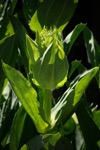Notice (8): Undefined index: geoplugin_countryCode [APP/Controller/AppController.php, line 94]Code Context$Country_code = '';if($ip_data && $ip_data['geoplugin_countryCode'] != null) {$Country_code = $ip_data['geoplugin_countryCode'];$client = null $forward = null $remote = '216.73.216.187' $ip = '216.73.216.187' $ch = unknown $ip_data_in = '{ "geoplugin_status":403, "geoplugin_message": "geoPlugin API is no longer available for free use. To continue access, please upgrade to a paid plan", "geoplugin_url": "https://www.geoplugin.com/subscription" } ' $ip_data = [ 'geoplugin_status' => '403', 'geoplugin_message' => 'geoPlugin API is no longer available for free use. To continue access, please upgrade to a paid plan', 'geoplugin_url' => 'https://www.geoplugin.com/subscription' ] $Country_code = ''App\Controller\AppController::initialize() - APP/Controller/AppController.php, line 94 App\Controller\ProductsController::initialize() - APP/Controller/ProductsController.php, line 31 Cake\Controller\Controller::__construct() - CORE/src/Controller/Controller.php, line 273 ReflectionClass::newInstance() - [internal], line ?? Cake\Http\ControllerFactory::create() - CORE/src/Http/ControllerFactory.php, line 47 Cake\Http\ActionDispatcher::dispatch() - CORE/src/Http/ActionDispatcher.php, line 91 Cake\Http\BaseApplication::__invoke() - CORE/src/Http/BaseApplication.php, line 235 Cake\Http\Runner::__invoke() - CORE/src/Http/Runner.php, line 65 Cake\Http\Runner::__invoke() - CORE/src/Http/Runner.php, line 65 Cake\Http\Middleware\CsrfProtectionMiddleware::__invoke() - CORE/src/Http/Middleware/CsrfProtectionMiddleware.php, line 104 Cake\Http\Runner::__invoke() - CORE/src/Http/Runner.php, line 65 Cake\Http\Runner::run() - CORE/src/Http/Runner.php, line 51 Cake\Routing\Middleware\RoutingMiddleware::__invoke() - CORE/src/Routing/Middleware/RoutingMiddleware.php, line 168 Cake\Http\Runner::__invoke() - CORE/src/Http/Runner.php, line 65 Cake\Routing\Middleware\AssetMiddleware::__invoke() - CORE/src/Routing/Middleware/AssetMiddleware.php, line 88 Cake\Http\Runner::__invoke() - CORE/src/Http/Runner.php, line 65 Cake\Error\Middleware\ErrorHandlerMiddleware::__invoke() - CORE/src/Error/Middleware/ErrorHandlerMiddleware.php, line 96
| Scientific: | Gentian (Yellow ) |
|---|---|
| Other: | Gentian |
| Family: | Gentianaceae |
Yellow gentian (Gentiana lutea) grows wild in the high altitudes of the Alps and other species of gentian are used by herbalists in Asia and Siberia. The root contains some of the bitterest compounds in the plant kingdom. Even a few small drops of tincture are sufficient to stimulate bitter taste receptors. Its aromatic bitter qualities have made it a long-time patron of herbalists and the liquor industry.
Gentian is primarily used as a digestive bitter to stimulate the release of stomach acid, bile, and pancreatic enzymes. The Commission E approved the internal use of gentian root for digestive disorders, such as loss of appetite, fullness, and flatulence. Herbalists prescribe gentian for “atonic digestion” when a person’s digestive function has become sluggish or suppressed due to stress, illness, and old age. It also can be useful for those suffering from indigestion from over-eating resulting in heaviness, bloating and occasional reflux. Numerous " digestif " liqueurs, including Campari, Unicum, Aperol, Suze, Amaro, and Averna, rely on Gentian for their bitter taste.
Gentian relieves some types of heartburn but aggravates others because it increases stomach acid. Gastroesophageal reflux disorder (GERD) often improves with Gentian because it helps tighten up the lower esophageal sphincter, increases saliva, and increases the rate that food is digested to promote the descent of food. Because gentian increases stomach acid, the herb aggravates heartburn due to inflammation of the stomach (gastritis) caused by H. pylori infection, and certain substances like non-steroidal anti-inflammatory drugs (NSAIDs) and alcohol.
Published clinical trials on gentian are limited. One study showed a combo containing gentian and other herbs improved gastric emptying. Unrelated to its traditional indications, gentian was found to aid with weight loss and has the potential of improving blood sugar control in diabetes.
One of the most bitter herbs and a long-time patron of the liquor industry.
Gastrointestinal
• atonic digestive complaints
• dyspepsia
• hypochlorhydria
• pancreatic insufficiency
• colic
• gastroparesis
• gastric esophageal reflux disease (GERD)†
Hepatobiliary
• biliary insufficiency
• cholestasis
• cholelithiasis (gallstones)
• jaundice
• biliary dyskinesia
Dermatologic
• acne rosacea
• Bitter
• Stomachic
• Hepatic
• Cholagogue
• Choleretic
• Sialogogue
• Antimicrobial
• Antifungal
• Antiparasitic
• Antileishmanial
• Antiinflammatory
• Laxative (Mild)
• Emmenagogue
• Secoiridoid Glycosides (E.g. Amarogentin)
• Xanthones
• Alkaloids
• Decoction (dried root): 0.6-2g tid, ac
• Tincture (1:5 in 45% EtOH): 1-4 ml tid, ac
Note: because of its strong bitter nature, 5-10 gtt may be added to water and consumed ideally, shortly before meals (or after a meal if indigestion is experienced acutely).
Contraindications: Pregnancy and lactation (uterine stimulant).
†Caution: Gastritis, hiatal hernia, peptic ulcers. May aggravate heartburn as bitters increase gastric secretions; however, may also benefit patients with GERD where LES tone is the cause, not hyperacidity. Discontinue use if if pain is burning in epigastric region.
Note: Concomitant ingestion of demulcent herbs can help prevent an aggravation.
Barnes J, Anderson LA, Phillipson JD. Herbal Medicines, 3rd ed. London: Pharmaceutical Press, 2007.
Bone K. Principles and Practice of Phytotherapy. Edinburgh: Churchill Livingstone, 2000.
Bone K. A Clinical Guide to Blending Liquid Herbs: Herbal Formulations for the Individual Patient. St Louis, MO: Churchill Livingstone, 2003.
Brinker F. The Toxicology of Botanical Medicines, 3rd ed. Sandy, Oregon: Eclectic Medical Publications, 2000.
Felter HW, Lloyd JU. King's American Dispensatory. 1898. http://www.ibiblio.org/herbmed/eclectic/kings/main.html. Accessed: August 19, 2006.
Hoffman D. Medical Herbalism. Rochester, Vermont: Healing Arts Press, 2003.
Weiss RF. Herbal Medicine. Beaconsfield, England: Beaconsfield Publishers Ltd, 1988.
Williamson EM, ed. Major Herbs of Ayurveda. Edinburgh: Churchill Livingstone, 2002
Disclaimer: This content is subject to change. The information is intended to inform and educate; it does not replace the medical evaluation, advice, diagnosis or treatment by a healthcare professional. www.nhpassist.com © 2014 NDAssist Inc. and/or its affiliates. All rights reserved.

|
Gentian (Yellow )
SummaryYellow gentian (Gentiana lutea) grows wild in the high altitudes of the Alps and other species of gentian are used by herbalists in Asia and Siberia. The root contains some of the bitterest compounds in the plant kingdom. Even a few small drops of tincture are sufficient to stimulate bitter taste receptors. Its aromatic bitter qualities have made it a long-time patron of herbalists and the liquor industry. IndicationsSign in requiredActionsSign in requiredConstituentsSign in requiredPosologySign in requiredSafetySign in requiredReferencesSign in required |
|---|